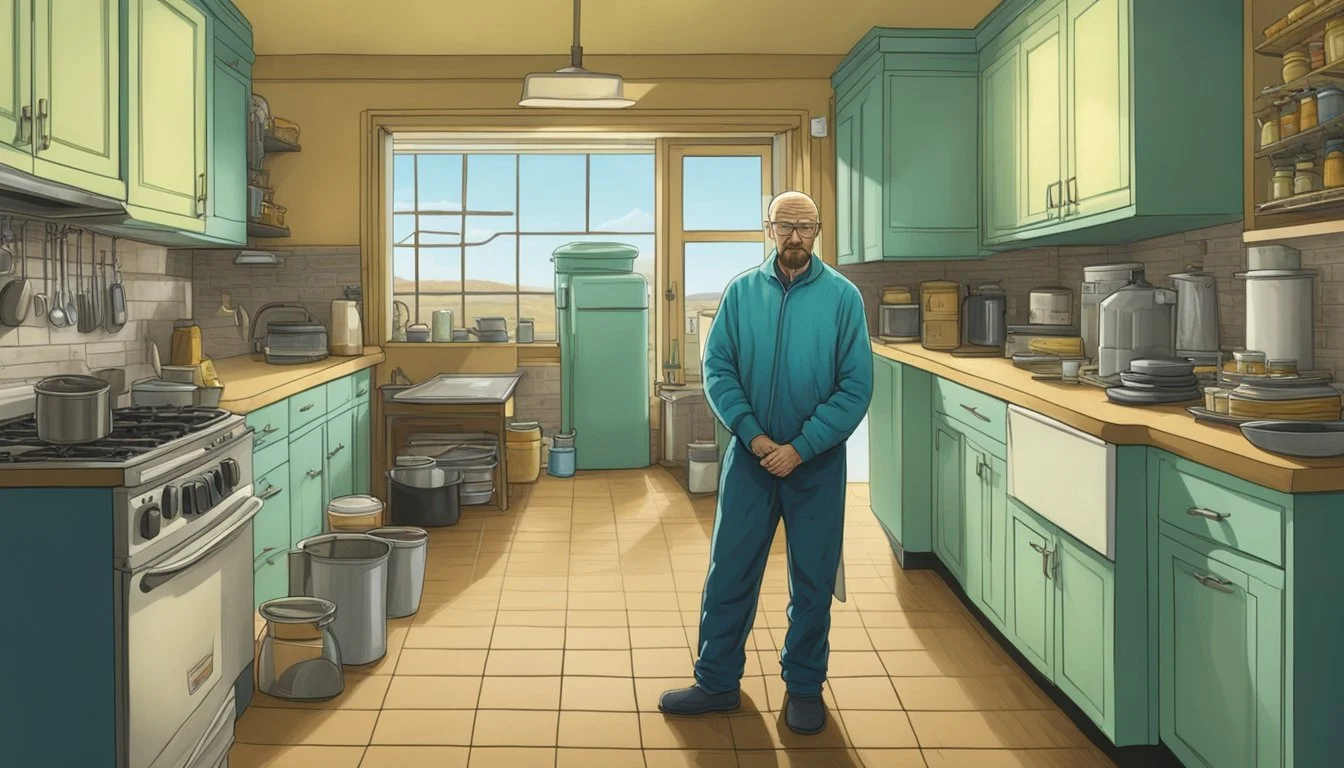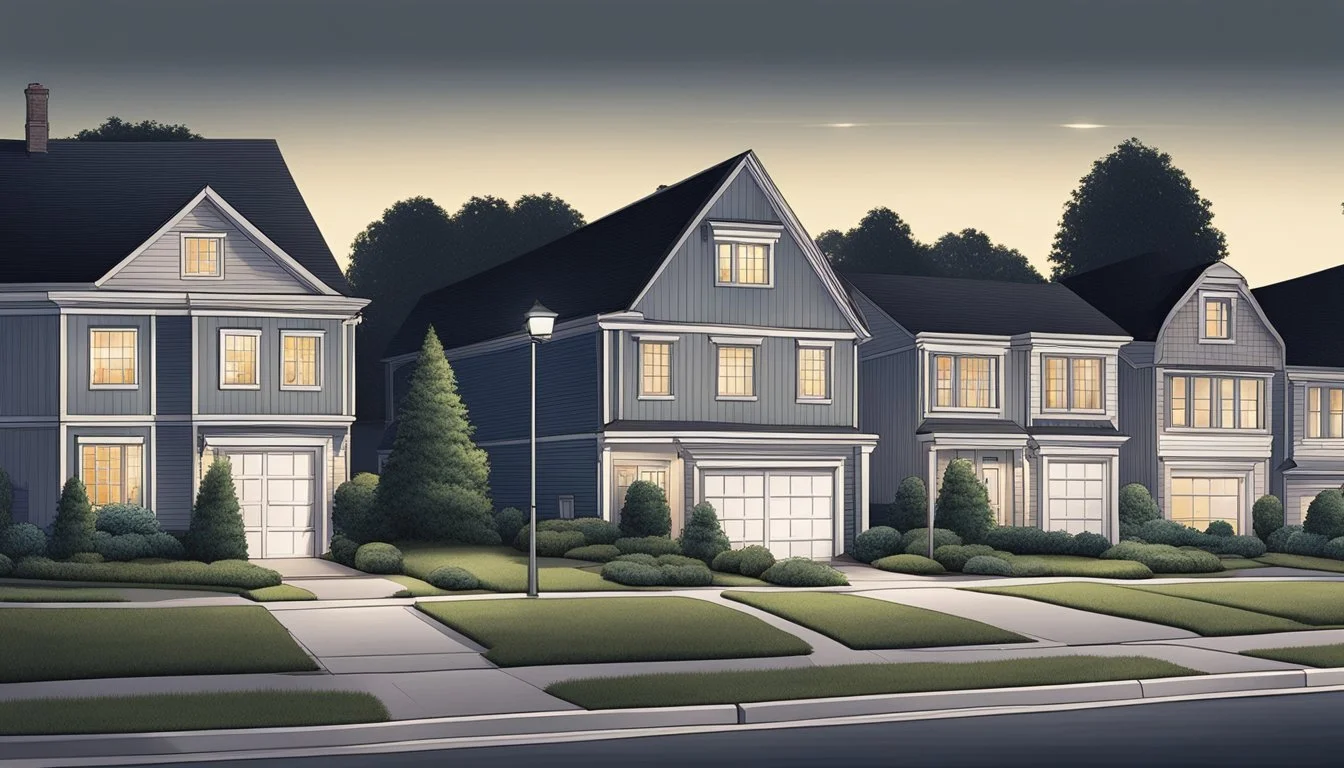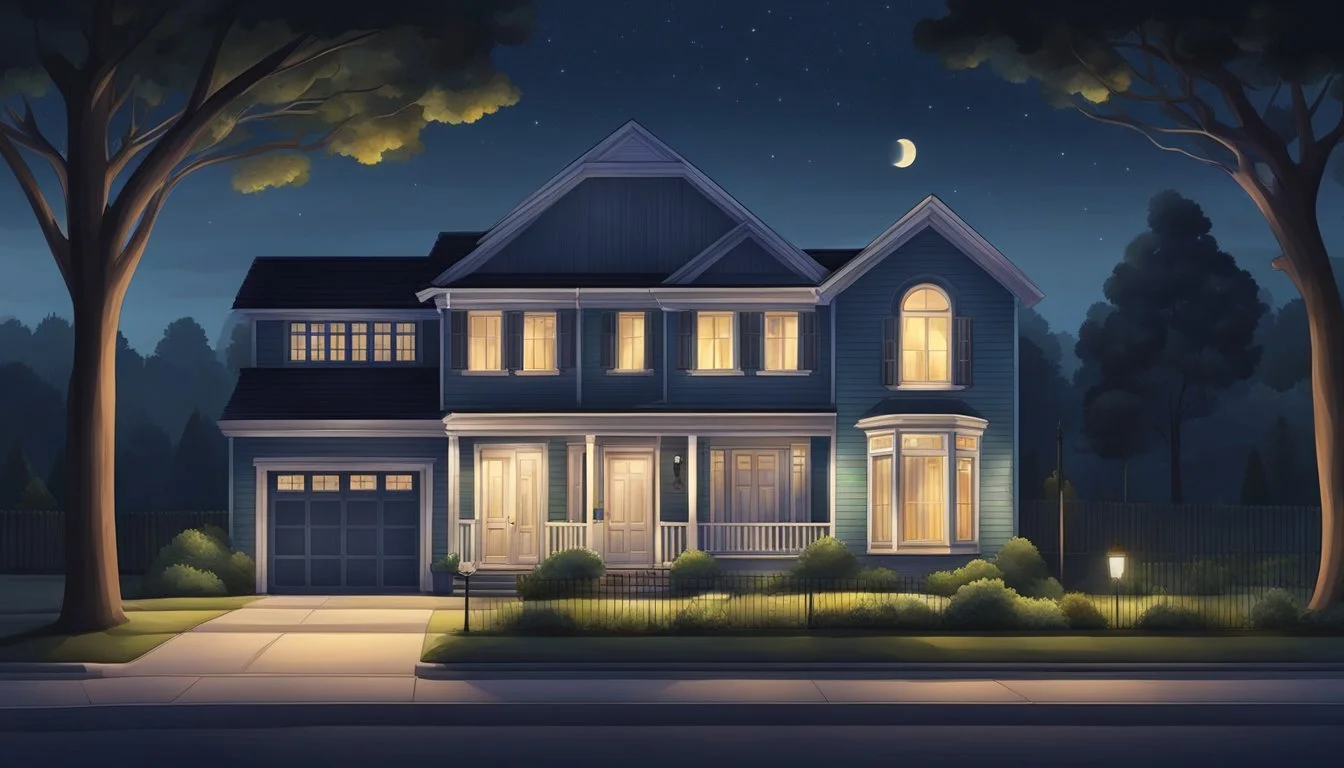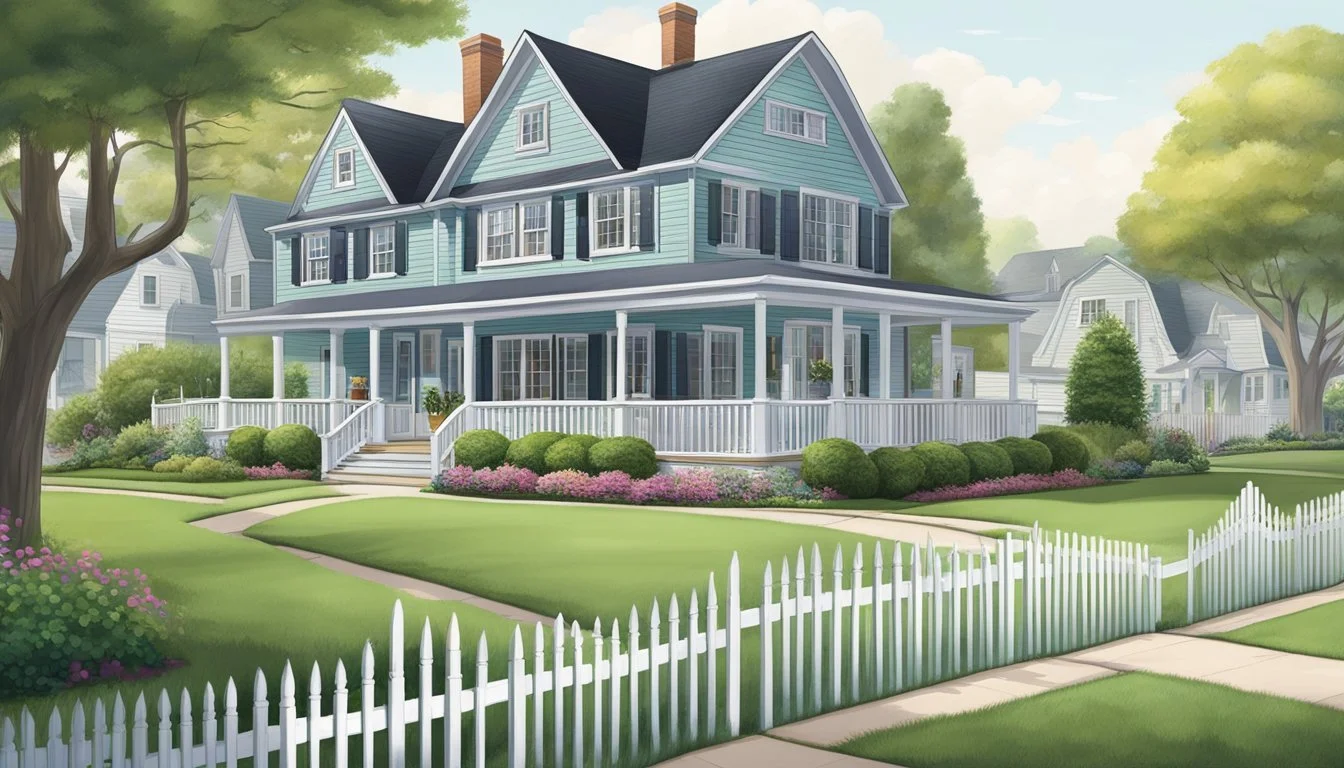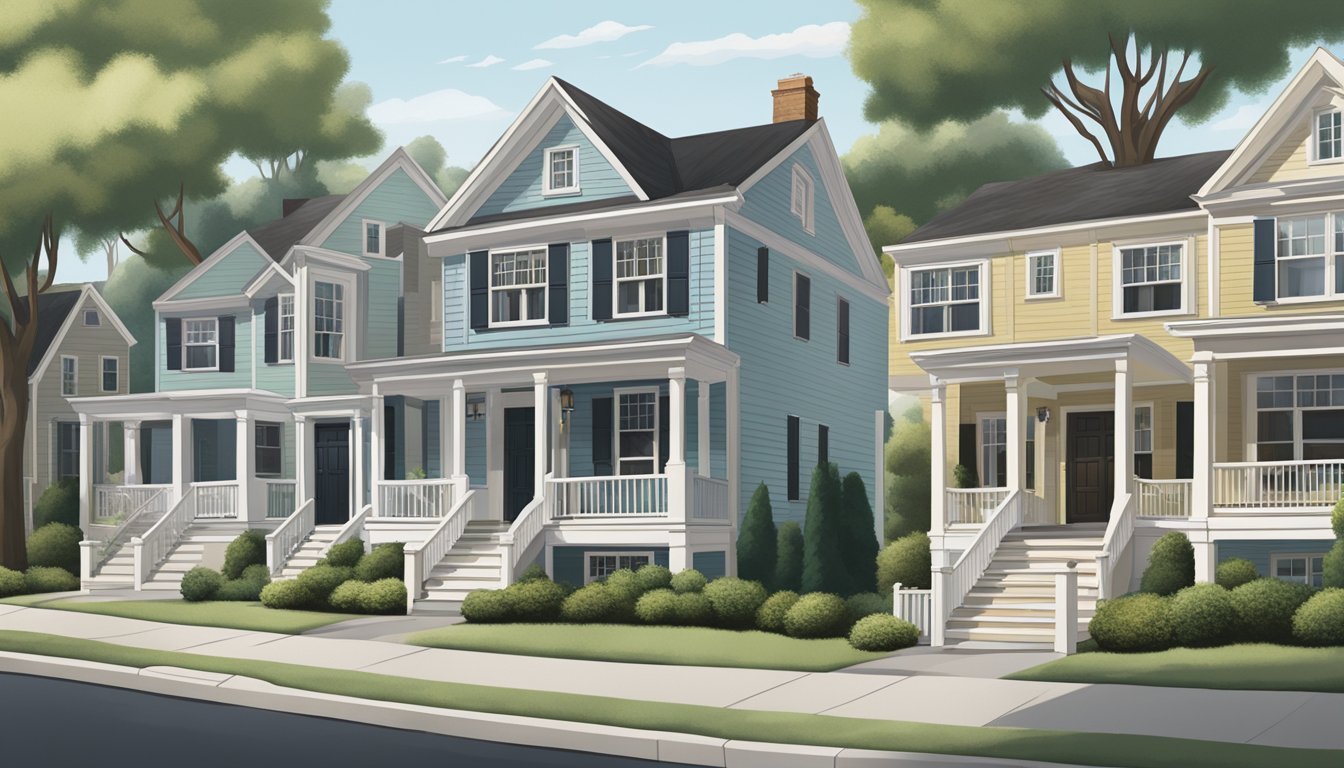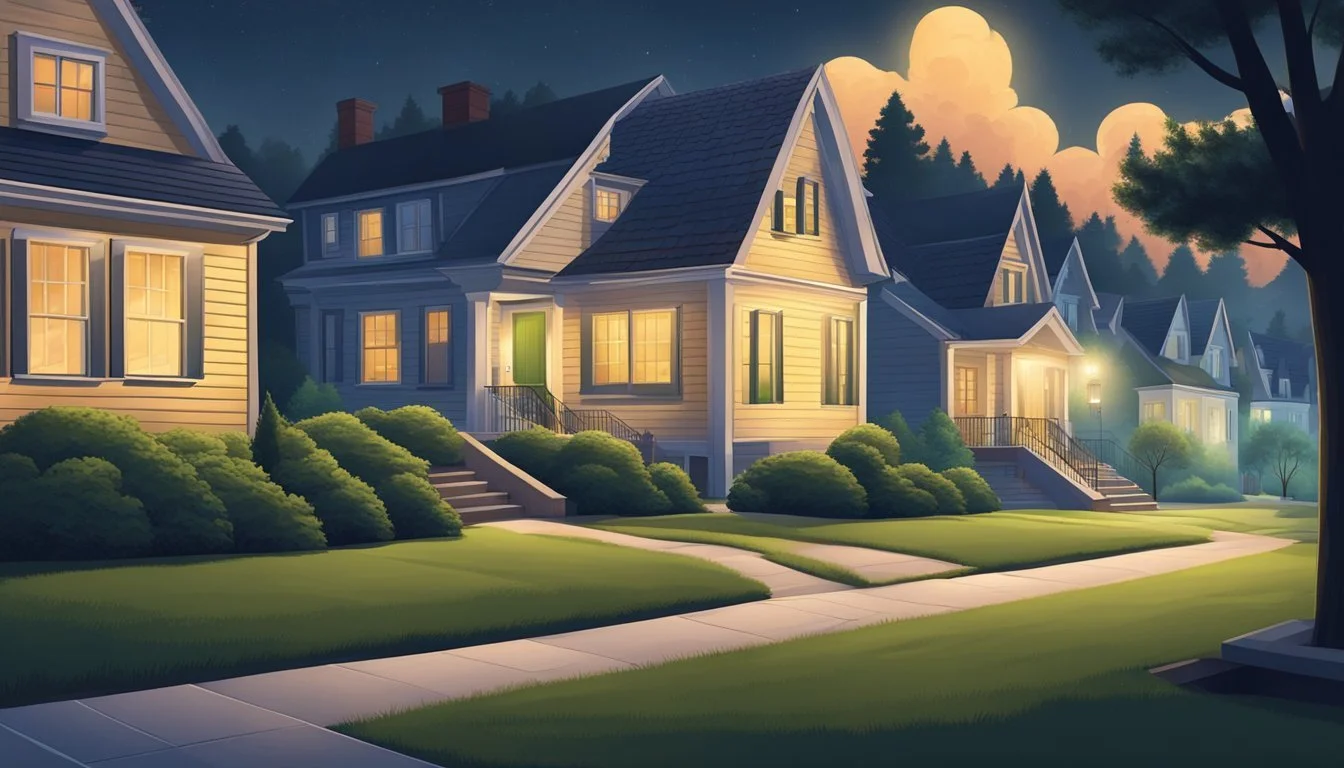Breaking Bad's Portrayal of Suburban Life: Behind Closed Doors
The Dark Reality of Albuquerque's Neighborhoods
Breaking Bad revolutionized television with its gritty portrayal of suburban life in Albuquerque. The show peeled back the veneer of middle-class respectability to expose the darkness lurking beneath. Creator Vince Gilligan masterfully juxtaposed the mundane aspects of suburban existence with the high-stakes world of drug manufacturing, creating a tension that kept viewers on edge.
The series challenged conventional depictions of suburbia by presenting a complex, morally ambiguous landscape. Walter White's transformation from mild-mannered chemistry teacher to ruthless drug kingpin unfolded against a backdrop of cookie-cutter houses and manicured lawns. This stark contrast heightened the drama and underscored the show's central themes of corruption and moral decay.
Breaking Bad's impact on popular culture extended far beyond its run, influencing subsequent television dramas and sparking discussions about the nature of evil and the American Dream. The show's nuanced exploration of suburban life resonated with audiences, forcing them to confront uncomfortable truths about the potential for darkness in their own neighborhoods.
Conceptualization and Creation
Breaking Bad's origins trace back to a unique concept and visionary creator. The show's development involved careful planning and a bold approach to storytelling on television.
The Genesis of 'Breaking Bad'
Vince Gilligan conceived Breaking Bad during a phone conversation with a friend. They discussed the idea of a law-abiding citizen suddenly turning to crime. This spark ignited Gilligan's imagination, leading to the creation of Walter White - a chemistry teacher diagnosed with lung cancer who enters the drug trade.
Gilligan pitched the concept to several networks before AMC greenlit the project. The network saw potential in the unconventional premise and Gilligan's track record from his work on The X-Files.
Vince Gilligan's Vision
Gilligan aimed to explore moral ambiguity and character transformation. His goal was to take the protagonist from "Mr. Chips to Scarface" over the course of the series. This radical character arc had never been attempted on television before.
He focused on crafting complex, multi-dimensional characters and intricate plotlines. Gilligan's attention to detail extended to the show's visual style, emphasizing the New Mexico setting and using color symbolism to enhance storytelling.
AMC supported Gilligan's creative vision, allowing him to push boundaries in terms of content and narrative structure. This freedom enabled Breaking Bad to become a groundbreaking series that redefined television drama.
Character Analysis and Evolution
Breaking Bad's characters undergo profound transformations, with their moral compasses shifting as they navigate increasingly dangerous situations. Their evolving dynamics and internal struggles drive the narrative forward.
Walter White's Descent
Walter White's transformation from mild-mannered chemistry teacher to ruthless drug lord forms the backbone of Breaking Bad. Initially motivated by a terminal cancer diagnosis, Walt's actions become increasingly calculated and morally ambiguous. He adopts the alter ego "Heisenberg," embracing a life of crime with growing enthusiasm.
Walt's descent is marked by manipulation, violence, and an insatiable desire for power. His relationship with his family deteriorates as he prioritizes his criminal enterprise. Walt's journey explores themes of masculinity, pride, and the corrosive effects of unchecked ambition.
The character's evolution challenges viewers to question their sympathies. Walt's initial relatability gives way to a complex antihero status, blurring the lines between protagonist and antagonist.
Jesse Pinkman's Struggle
Jesse Pinkman serves as both foil and accomplice to Walter White. Initially portrayed as a small-time drug dealer, Jesse's character arc is defined by internal conflict and a search for redemption.
Throughout the series, Jesse grapples with guilt over his actions and struggles to escape the criminal world. His loyalty to Walt is repeatedly tested, leading to emotional turmoil and difficult choices.
Jesse's journey touches on themes of addiction, morality, and the possibility of change. His character development provides a counterpoint to Walt's descent, offering moments of humanity and ethical questioning amidst the chaos.
Supporting Cast Dynamics
Breaking Bad's supporting characters add depth and complexity to the narrative. Skyler White's evolution from oblivious wife to reluctant accomplice explores the impact of Walt's choices on his family. Her struggle for control within her marriage becomes a central conflict.
Hank Schrader's pursuit of "Heisenberg" creates tension and moral dilemmas. His dedication to law enforcement clashes with his personal connections, leading to a tragic arc.
Saul Goodman and Gus Fring represent different facets of the criminal world. Saul's opportunism and Gus's calculated ruthlessness provide contrasts to Walt's amateur beginnings and eventual rise to power.
These characters' interactions and evolving relationships drive the plot forward, creating a rich tapestry of conflicting motivations and loyalties.
Thematic Exploration
Breaking Bad delves into complex themes that challenge viewers' perceptions of morality and human nature. The show examines how ordinary individuals can be driven to extreme actions when faced with dire circumstances.
Cancer Diagnosis and Desperation
Walter White's terminal cancer diagnosis serves as the catalyst for his transformation. Faced with mounting medical bills and a desire to provide for his family, Walt turns to methamphetamine production. This desperate act highlights the failures of the American healthcare system and the lengths people may go to when confronted with their own mortality.
The show explores how a life-altering diagnosis can push someone to reevaluate their priorities and make choices they never thought possible. Walt's initial motivations seem altruistic, but his actions quickly spiral into a web of lies and criminal activity.
Moral Quandaries and Decay
As the series progresses, Walt's moral compass erodes. The show presents a stark portrayal of moral decay, challenging viewers to question their own ethical boundaries. Walt's transformation from a mild-mannered chemistry teacher to a ruthless drug kingpin is a study in the corrupting influence of power and greed.
The series forces viewers to confront uncomfortable truths about human nature. It raises questions about the thin line between right and wrong, and how easily one can justify immoral actions when faced with difficult choices.
Breaking Bad uses symbolism and archetypes to reinforce its themes of moral decline. The deterioration of Walt's character is mirrored in the decay of his surroundings and relationships.
The Consequences of Power and Control
Walt's pursuit of power and control comes at a devastating cost to himself and those around him. The show explores how the accumulation of power can lead to a loss of humanity and empathy. As Walt becomes more successful in the drug trade, he becomes increasingly isolated and paranoid.
The series examines the ripple effects of one person's actions on their family, friends, and community. It shows how the desire for control can ultimately lead to a loss of control over one's own life and destiny.
Breaking Bad's portrayal of power dynamics extends beyond Walt's personal journey, touching on themes of masculinity, authority, and the corrupting influence of the drug trade.
The Suburban Setting
Breaking Bad's portrayal of suburban life in Albuquerque reveals hidden complexities beneath a seemingly ordinary facade. The show masterfully uses its setting to explore family dynamics and the darker aspects of suburban existence.
Albuquerque as a Character
Albuquerque plays a crucial role in Breaking Bad, serving as more than just a backdrop. The city's vast suburban areas and endless cul-de-sacs mirror Walter White's dissatisfaction with his mundane life.
The show's creators initially planned to set the series in Riverside, California. However, the decision to film in Albuquerque profoundly shaped the narrative.
Albuquerque's unique landscape, from its desert vistas to its cookie-cutter neighborhoods, became an integral part of the story. The city's blend of urban and suburban elements provided a perfect canvas for the characters' moral descent.
The Facade of the White Family
The White family epitomizes the suburban ideal on the surface. Their modest home, complete with a pool and garage, presents an image of middle-class stability.
This facade quickly crumbles as Walter's secret life unfolds. The family's struggles reflect broader issues hidden within suburban communities.
Breaking Bad explores how financial pressures and unfulfilled ambitions can lead to drastic choices. The White family's living room becomes a stage for intense confrontations and revelations.
The show's portrayal of suburban life suggests that behind every closed door lies potential for both mundane routines and extraordinary secrets.
Breaking Bad's Cinematic Craft
Breaking Bad's cinematic excellence elevates it beyond typical television. The show's masterful writing, dialogue, and visual storytelling create a rich, immersive experience that resonates with viewers.
Writing and Dialogue
Breaking Bad's script shines with sharp, realistic dialogue. Characters speak in distinct voices, revealing their personalities and motivations. Walt's transformation from meek teacher to drug lord is reflected in his changing speech patterns.
The show excels at "show, don't tell" storytelling. Key plot points unfold through visual cues and subtle character interactions. This approach engages viewers, encouraging them to piece together the narrative.
Breaking Bad's writers craft tense, unpredictable scenarios. Each episode builds suspense, often culminating in shocking twists. This keeps audiences on the edge of their seats, eager for the next installment.
Cinematography and Symbolism
Breaking Bad's visual style is a character in itself. The cinematography evolves alongside Walt's descent into criminality. Early episodes feature warm, inviting colors. As the story darkens, so does the palette.
The show employs creative camera angles to heighten tension. Low-angle shots make characters appear more menacing. Time-lapse sequences showcase the passage of time and the relentless march of events.
Symbolism plays a crucial role in Breaking Bad's visual language. Colors carry significant meaning: Walt's green shirt symbolizes greed, while Jesse's red attire represents danger. These visual cues enhance the storytelling without relying on dialogue.
Real-World Parallels
Breaking Bad's gritty portrayal of suburban life intersects with real-world drug enforcement efforts and scientific principles. The show draws inspiration from actual DEA operations and chemistry concepts to craft its compelling narrative.
The DEA's War on Drugs
The Drug Enforcement Administration's efforts to combat methamphetamine production mirror Walter White's fictional experiences. DEA agents routinely conduct raids on suburban meth labs, often hidden in ordinary homes. These operations target small-scale producers and large drug trafficking organizations.
The show accurately depicts the challenges faced by law enforcement in disrupting the meth trade. Clandestine labs can be set up quickly and moved frequently, making them difficult to track. DEA statistics reveal thousands of meth lab seizures annually, highlighting the ongoing struggle against this illicit industry.
Breaking Bad's portrayal of the drug trade's violence and far-reaching consequences aligns with real-world concerns. The series showcases how seemingly ordinary individuals can become entangled in criminal enterprises.
Chemistry as a Storytelling Tool
Breaking Bad leverages authentic chemistry principles to drive its plot forward. Walter White's expertise as a chemist allows him to produce high-purity methamphetamine, a key element in his rise as a drug kingpin.
The show's creators consulted with scientific advisors to ensure accuracy in depicting chemical processes. This attention to detail lends credibility to the narrative and educates viewers about the science behind drug production.
Real-world chemistry plays a crucial role in law enforcement efforts to combat illegal drugs. Forensic chemists analyze seized substances, helping to build cases against drug manufacturers and distributors. The show's focus on chemistry highlights its importance in both criminal activities and their investigation.
Legacies and Spin-Offs
Breaking Bad's impact extended far beyond its original run, spawning critically acclaimed spin-offs and leaving an indelible mark on television culture.
The Cultural Legacy of 'Breaking Bad'
Breaking Bad redefined television storytelling, elevating the medium to new heights. Its innovative approach to character development and narrative structure set a new standard for drama series. The show's popularity paved the way for complex, serialized storytelling in television.
Breaking Bad's influence can be seen in subsequent high-quality dramas like The Americans and Fargo. The series' success proved that audiences were ready for morally ambiguous protagonists and intricate plot lines.
The episode "Ozymandias" is often cited as one of the greatest television episodes ever made, showcasing the series' ability to deliver intense, emotionally charged storytelling.
Beyond 'Breaking Bad': Spin-Offs and Sequels
Better Call Saul, a prequel series focusing on the character of Saul Goodman, expanded the Breaking Bad universe. The spin-off matched its predecessor's critical acclaim, further demonstrating the depth of the show's world.
El Camino, a feature-length sequel, provided closure for Jesse Pinkman's character arc. This film attracted both existing fans and new viewers, proving the enduring appeal of Breaking Bad's characters.
These spin-offs showcased the versatility of the Breaking Bad universe. They explored different tones and styles while maintaining the high-quality storytelling established in the original series.
The success of these expansions cemented Breaking Bad's legacy as a franchise capable of sustaining multiple compelling narratives.
Analyzing the Show's Success
Breaking Bad achieved remarkable success through its compelling storytelling, complex characters, and innovative approach to television drama. The series garnered widespread acclaim from critics and audiences alike, solidifying its place as one of the most influential TV shows of the 21st century.
Critical Acclaim and Audience Reception
Breaking Bad received numerous accolades throughout its five-season run. The show won 16 Primetime Emmy Awards, including four for Outstanding Drama Series. Bryan Cranston and Aaron Paul earned multiple Emmy wins for their performances as Walter White and Jesse Pinkman, respectively.
Critics praised the show's tight plotting, masterful character development, and exploration of moral ambiguity. Many hailed it as a pinnacle of television storytelling. The series finale drew 10.3 million viewers, a testament to its growing popularity and cultural impact.
Breaking Bad's success extended beyond its initial broadcast. The show gained a significant following through streaming platforms, particularly Netflix. This wider accessibility introduced new audiences to the series, further cementing its status as a TV phenomenon.
Impact on Modern Television
Breaking Bad raised the bar for TV drama, influencing subsequent series in terms of storytelling techniques and production values. The show's cinematic visual style and attention to detail set new standards for television cinematography.
Its success paved the way for more complex, morally ambiguous protagonists in TV dramas. Walter White's transformation from a mild-mannered teacher to a ruthless drug lord challenged traditional notions of heroism and villainy on television.
The series demonstrated the potential for long-form storytelling on TV, encouraging networks and streaming platforms to invest in high-quality, serialized dramas. This shift contributed to the current "golden age" of television, characterized by ambitious, cinematic productions.
Breaking Bad's impact extended to its setting as well. The show's portrayal of Albuquerque, New Mexico, sparked increased interest in the city as a filming location and tourist destination.

